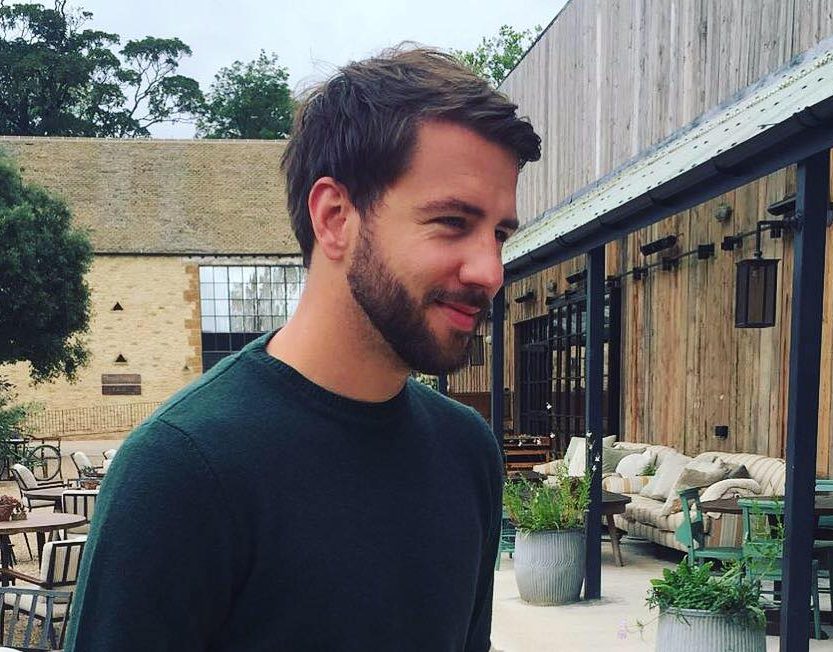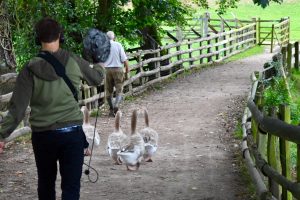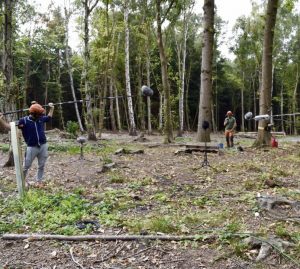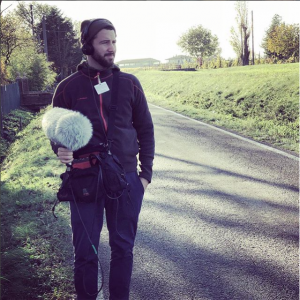
Meet David Philipp: Sound Designer and Co-Founder of The Noiseworks Ltd. Based out of London, UK, David’s work has appeared on many release trailers for Total War: Warhammer and Warhammer II as well as the Total War titles, including Rome II, Attila, Kingdoms, and Warharmmer (where he was a lead creature designer). He is also a recordist and designer for the Boom Libraries, having crafted the libraries Mechanicals, Medieval Life, and Cinematic Trailers Designed II, amongst others. Recently, he and his friend Byron Bullock broke free to start their own company called The Noiseworks Ltd, a creative sound design and music company. David was generous enough to take time out of his busy schedule to chat with me about his work, creative process, and how he has fun.
Can you start by talking a little bit about yourself, how you got into the field of sound design and what you mainly do now?
I started sound designing back in 2009, but my way into it was a bit of a weird one. At that time, I was studying audio and game design in Austria, and at one point in our course, we were required to do an internship. I emailed loads of people about internships, mostly in the states, inquiring about helping as a trailer composer. Nobody got back to me. The only company which did get back to me, in the end, was Dynamedion in Germany. Back then, they were a really small company, only 5 people, and the internship wasn’t for composing; it was for sound design.
At that point, I had literally no idea about sound design. They really just threw me into the cold water. I started designing sounds for indie games and mobile games, gradually working my way to bigger games. The biggest part of that internship, however, was that we started Boom Library back then.
I always wanted to become a composer in my younger years, but as soon as I started designing sounds I literally never wanted to look at music again. I think until then I didn’t really know that much about sound design. Obviously, I knew it was around, but it’s like something you’re a bit blind to if you aren’t focusing on it.
After that stint at Dynamedion and after I had gained a few years of experience as a freelancer, I spent 4 years at The Creative Assembly, working on the Total War titles: Rome II, Attila, Kingdoms, and Warhammer. One of the reasons why I joined there was because of my specialization in creature sound design. I found myself leading the production of the whole creature sound design for Warhammer.
In December of 2016, my good friend Byron Bullock and I started Noiseworks together. Now we’re just doing a lot of UK based Boom Library work, game audio outsourcing, and trailer sound design.
 You briefly mentioned that you were specialized in creature sound design. How did you gain that specialization?
You briefly mentioned that you were specialized in creature sound design. How did you gain that specialization?
I think it all started with Boom Library. We had a lot of projects with Dynamedion that required creature sound design and had struggled a little bit in designing those sounds. We just didn’t have the material. You need a lot of material, a lot of recordings of different animals, human sounds… all that stuff. And we always struggled to come up with variations. So, when we finished the Cinematic Metal Boom Library, which was our first library, we decided that we were going to make a creature construction kit.
The twist on that was that we started using the Sanken CO-100K microphone, which was a bit of a novelty back then. We used this mic to create a whole library with just human sounds. That was an eye-opener for us because we saw all of a sudden that we could make different creature sounds just by using our own voices.
Through creature boom library, we got a lot of contract work for games such as Elder Scrolls Online (Bethesda) and ArcaniA (Spellbound Entertainment). Because we had a problem, we found a solution. And that lead to the opportunity to do a lot more. Over the years, we just became quite good at it I think.
What does a typical day to day for you look like? What is your workflow?
We meet up frequently to talk about what’s coming up and discuss feature releases for Boom Library. A big part of our work for Boom Library is finding recording locations and people who are willing to let us record. There can be a lot of admin taking place, which is normally what we do at the start of each week.
Byron and I share projects. It’s not like we have a deal where I’m just doing the boom stuff and he’s doing all the trailer sounds. We try, for example, if we’re working on trailers, to split it into scenes where we work on a scene or reel each. For Boom Libraries, however, we record material together. Every day is something different, which is quite nice.
You’re balancing, at any given point, admin work for field recording, actual field recording, and creating and editing sounds for trailers, is that right?
And for games as well. That’s mainly what we’re doing at the moment.
 Okay. When you’re doing the work for games, is it mostly asset creation and tossing it over the fence?
Okay. When you’re doing the work for games, is it mostly asset creation and tossing it over the fence?
Exactly. We have a spreadsheet of sounds and videos that the game team has supplied to us. We create the sounds for them and send them back. Then we get feedback and so on until the sound is complete. We have also gone in-house as necessary to complete projects. Basically, we do whatever we can to make the results as great as possible.
How do you balance the need to work quickly with the desire to deliver the highest quality of content?
The biggest challenge is that people tend to contact us when they are a bit under pressure and need sounds very quickly. There was a project recently where Byron and I had to tackle many sounds in a very short amount of time. We had different characters to do where every single character had special abilities, skills, weapons, and moods. We still needed to make sure the quality was high because that’s our names out there. So we came up with a way of working, which works really well for the two of us and has proven to be successful under pressure.
Our workflow is very team based. What we’re doing is creating a pallet of sounds for every single project we work on that always lives on dropbox. We both populate it with all kinds of sounds, recordings, and designs we’ve made throughout the whole project. Then we exchange sound effects with each other and are constantly working with the sounds we already have to make something new out of them. Our sounds grow and grow and grow and become our pallet for a certain project. Even after 12 months of doing this, we have a massive custom library that we can now use.
This workflow is really important to us and is generally well received by the client. Between us, the sound is always consistent and stays true to character. It doesn’t sound like two different people worked on their stuff. And for us, it’s essential because one of us couldn’t have tackled the work alone.
If clients are only able to give you two weeks to design new content, and in that time you need to record, design, and edits sounds, that’s quite tight.
It’s not always that stressful, but can be quite tight. Normally, one of us would start pre-designing those sounds to start on the pallet and then the other would immediately start on making the actual assets for the clients. It’s kind of a rotation, which works quite well. If we needed custom recordings for a project, like if we needed to go to some random person’s farm, for example, to record animals, we’d need more notice than that. But that’s why we can always fall back on all our stuff we’ve recorded in the past.
How do you ensure that the final product is unique to each project?
In terms of creature sound design, it’s always difficult to find a way to make stuff unique. If you work on an orc in one game and an orc in a different game, they are still orcs. There’s only so much you can do. So yes, it can definitely be a problem. That’s why we do these pallets so that we can be sure that we actually have new starting points for each project.
 It strikes me how well you work together. Once you’ve started on pre-production, how do you stay aligned from a design perspective?
It strikes me how well you work together. Once you’ve started on pre-production, how do you stay aligned from a design perspective?
It sounds like it could be a bit problematic, I agree with you. In pre-production, it barely ever happens that I start creating sounds for the construction kit that Byron would finish. Instead, I would spend a day on the construction kit sound design of the pallet and then Byron would create his version on another day.
It’s as if you start painting and you have all your colors, but you’re also allowed to mix them with other colors. There are no real rules, as long as the result is good at the end. Most of the time, it’s important that we get stuff from each other because our approaches are so different. Byron for example, designs a lot heavier than I do, which is what makes the end result so interesting with many layers to each sound.
What tools do you use as part of your individual workflow?
When I start on a sound for a project, I open Soundminer and search for the first kind of layer that I’m thinking of. Let’s say I’m working on a creature sound, like some elephant creature, so it makes a bit more sense. I would probably look in Soundminer for some kind of a tooting sound that most obviously defines the character I’m working on. Then, I would apply a lot of different plug-in chains. Some are completely random, some will make it really loud, distort it, add tremolo, etc.
Once I get the sound the way I like it, I drop it into Pro Tools. But always just one sound at a time. In Pro Tools, I pitch shift the sound and adjust volume and EQ. As soon as I’m happy with that layer, I put in the next layer. I don’t really do that much processing in Pro Tools, because I like to change the source beforehand, not after. I build the sound up layer by layer. If it doesn’t work, I don’t try and make it work.
How did you develop that process?
That’s really difficult to say. I think because I have a bit of a music background, I compared it to making music. I was probably like every new sound designer, hunting for that special kind of formula on how to make good sound design. After a few years, I realized that it’s about layers. There is hardly ever a sound which works straight out of the library, unfortunately.
There are a few people that have also influenced me in my work. One of them was the Creative Director of the Boom Library, Axel Rohrbach. Early on in my career, I would sit next to him and watch him work. He would be throwing in sounds, trying to see what worked. If something didn’t work, he’d delete it. It was a massive eye-opener for me.
I think it’s really important when you start out that you have someone to look up to. And not just somebody on the internet, someone you can really sit next to and ask the questions you want to ask. We share our knowledge and I don’t know if it makes us better designers but it makes it easier at least.
Let’s talk about fun. What keeps you getting out of bed every morning and continuing to be a Sound Designer?
Fun is definitely going out to record stuff. But only if it works. If it doesn’t work, it’s not so much fun! It’s also about the enjoyment and the feedback I get from people. If I have a bad day and don’t really want to work, I just remind myself that people are out there using our sounds, finding them useful and designing fresh and exciting new sounds out of it. If other people appreciate our sounds, that’s the nicest part of our job.
A big thank you to David for taking time to speak with me about his work. You can find out more about David @davidphilipp or at thenoiseworks.com.
Nice work dude!